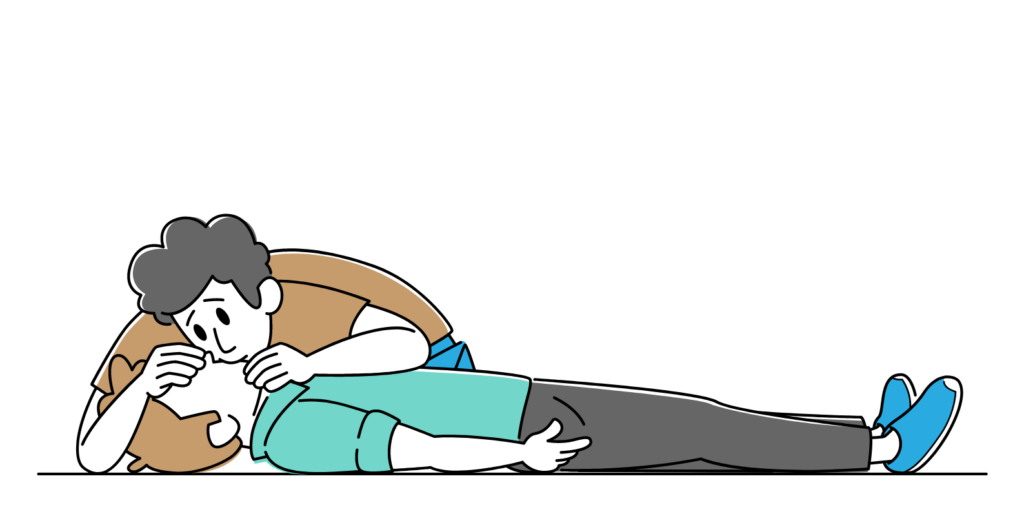If you’re in an emergency CALL 000
Follow our step-by-step guides below for how to perform CPR on an adult or child over (8 years old).
We also have specific guides on CPR for children, infants and during pregnancy.
*The information below does not replace First Aid training. *
Make sure that you have followed the DRSABCD action plan. This ensures that you have performed the vital steps before beginning CPR.
After having the DRSABCD plan, follow the steps below.

4. Use the weight of your body and push your hands down to roughly 1/3 of the depth of their chest.
5. Release the pressure and push down again.
6. To ensure that the patient is in the correct position, place one hand on their forehead and the other hand under their chin to tilt their head back.
7. Pinch their nose with your thumb and index finger and use your other hand to open their mouth.


8. Take a breath and form a seal around the patient’s mouth. Blow for about one second and look for the chest to rise and fall. Then give a second breath.

Repeat the process and aim to do 5 cycles per 2 minutes. If you get tired, swap with someone else every 5 cycles.
Most businesses house an AED, so if an AED is available, use it.
If an AED is available, attach the pads as demonstrated in the picture below and follow its instructions.
The AED looks at the heart rhythm every 2 minutes and may deliver a shock to the patient. It will tell you before it does so.
In between every analysis- keep performing CPR.

Only stop CPR if one of the following has occurred:
If the patient is breathing, continue to monitor them and place them in the recovery position, as shown below:
